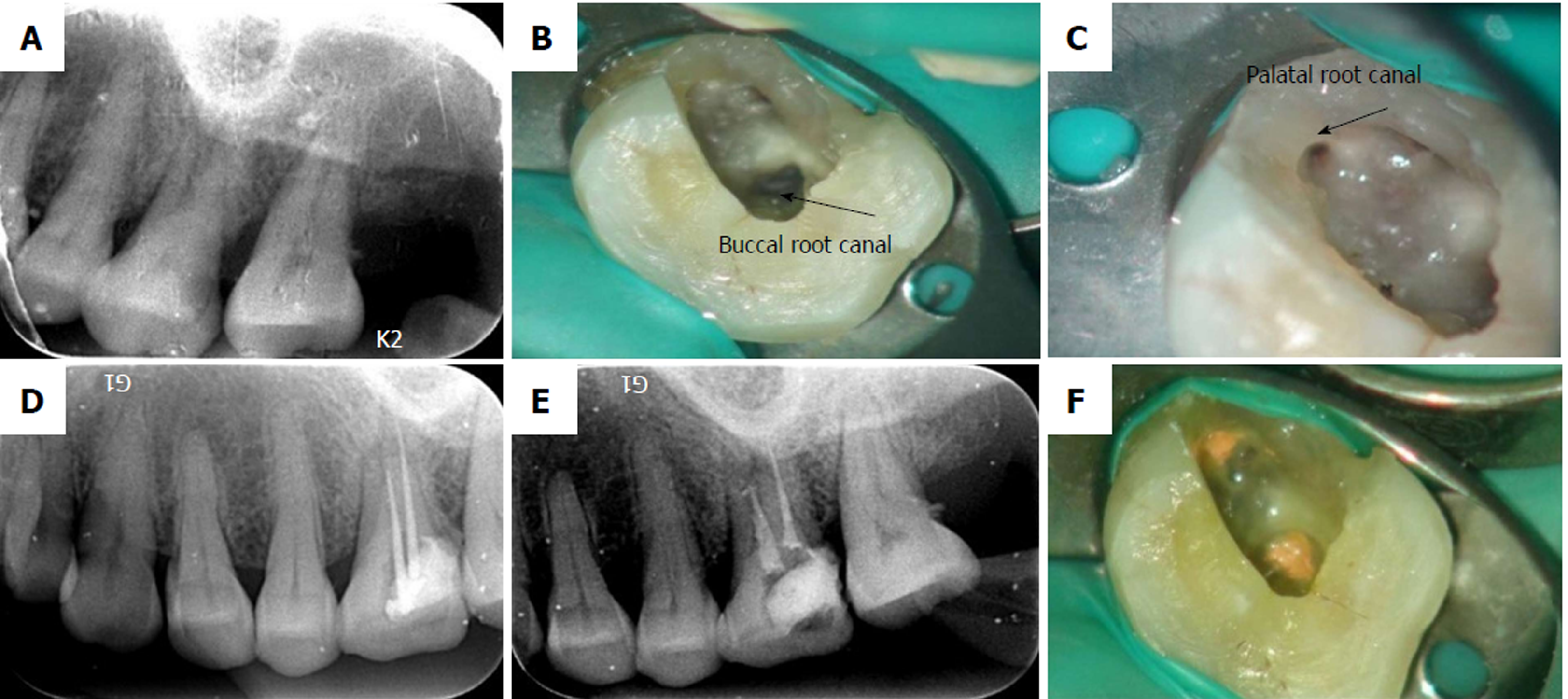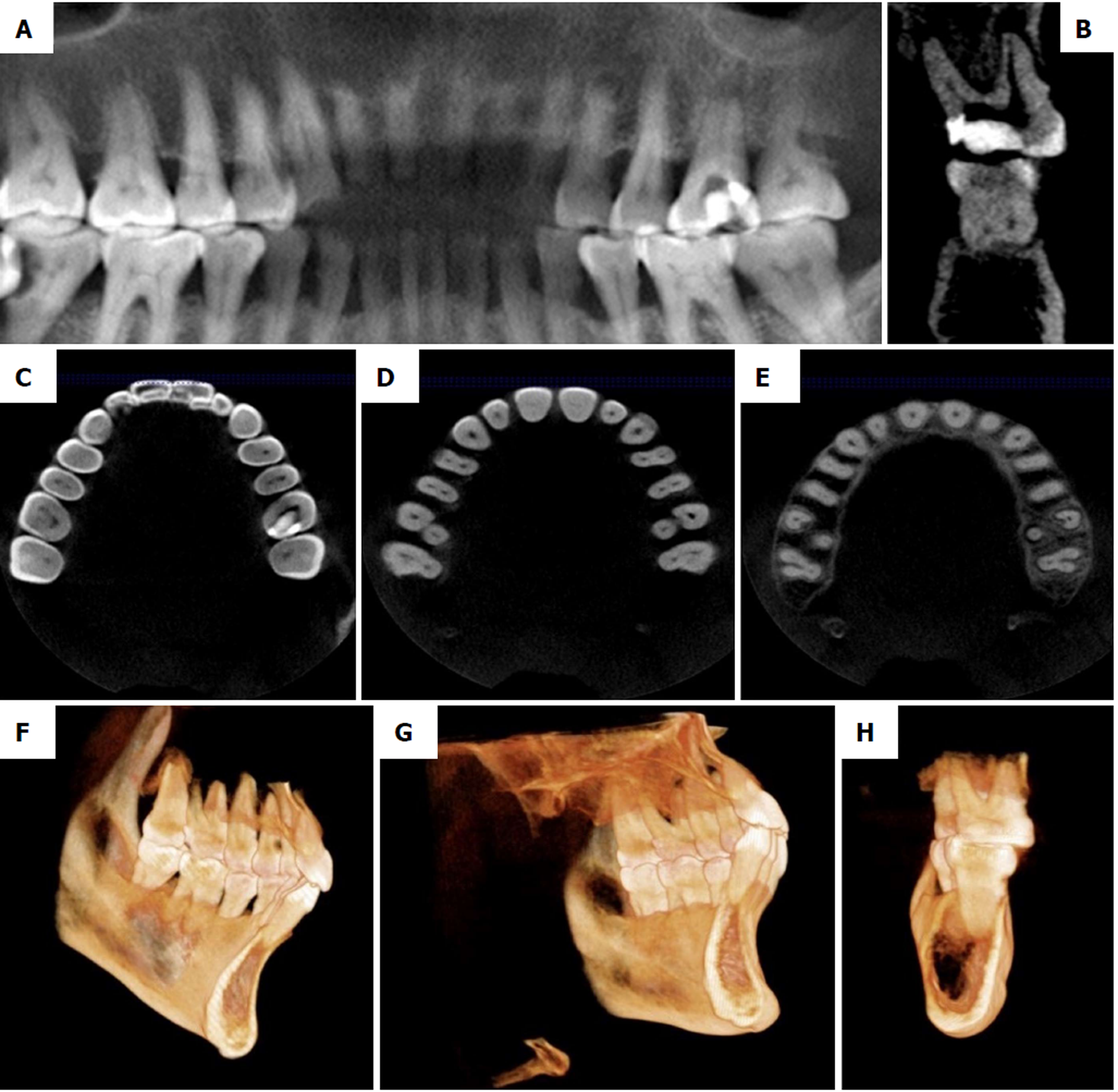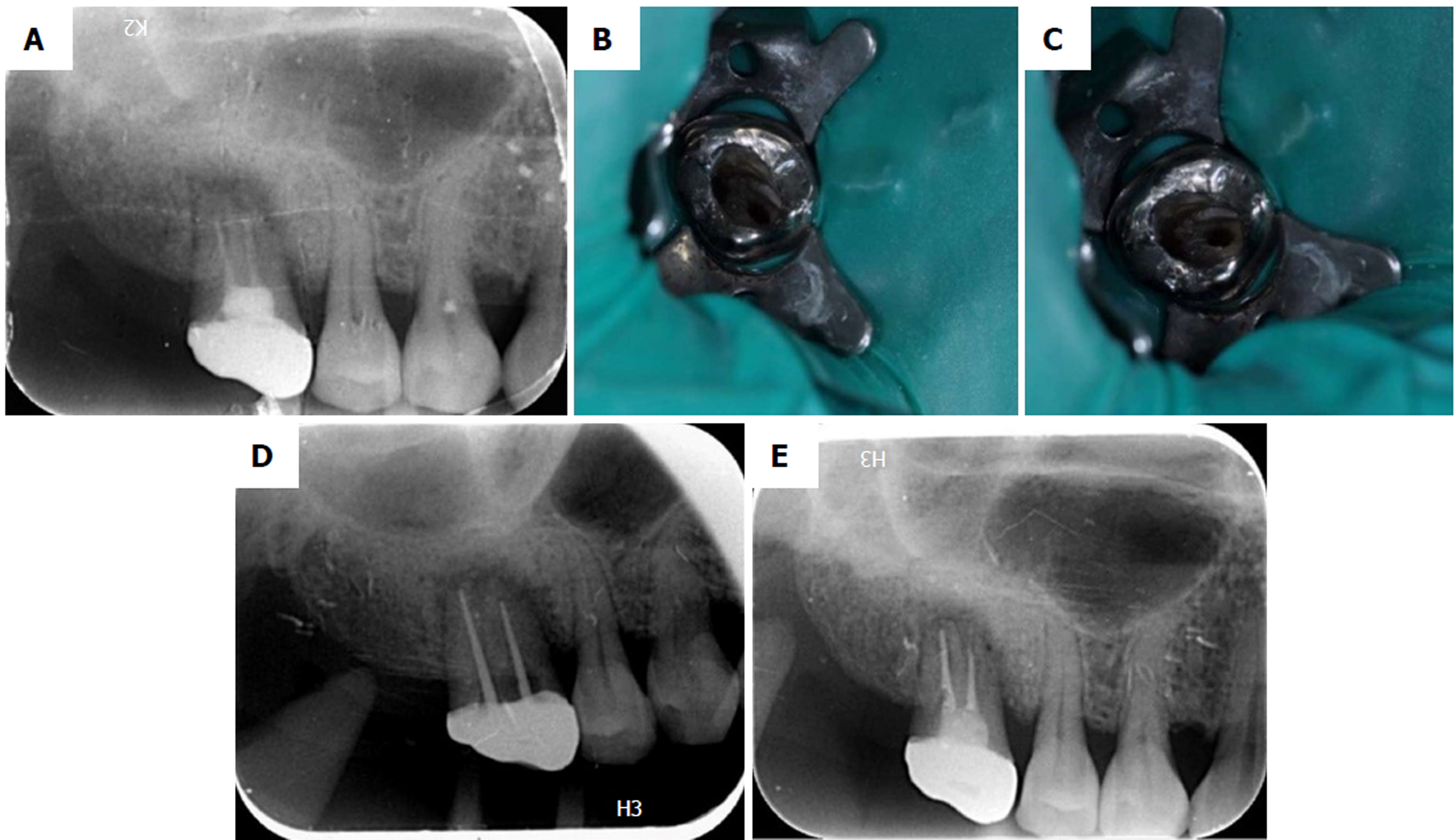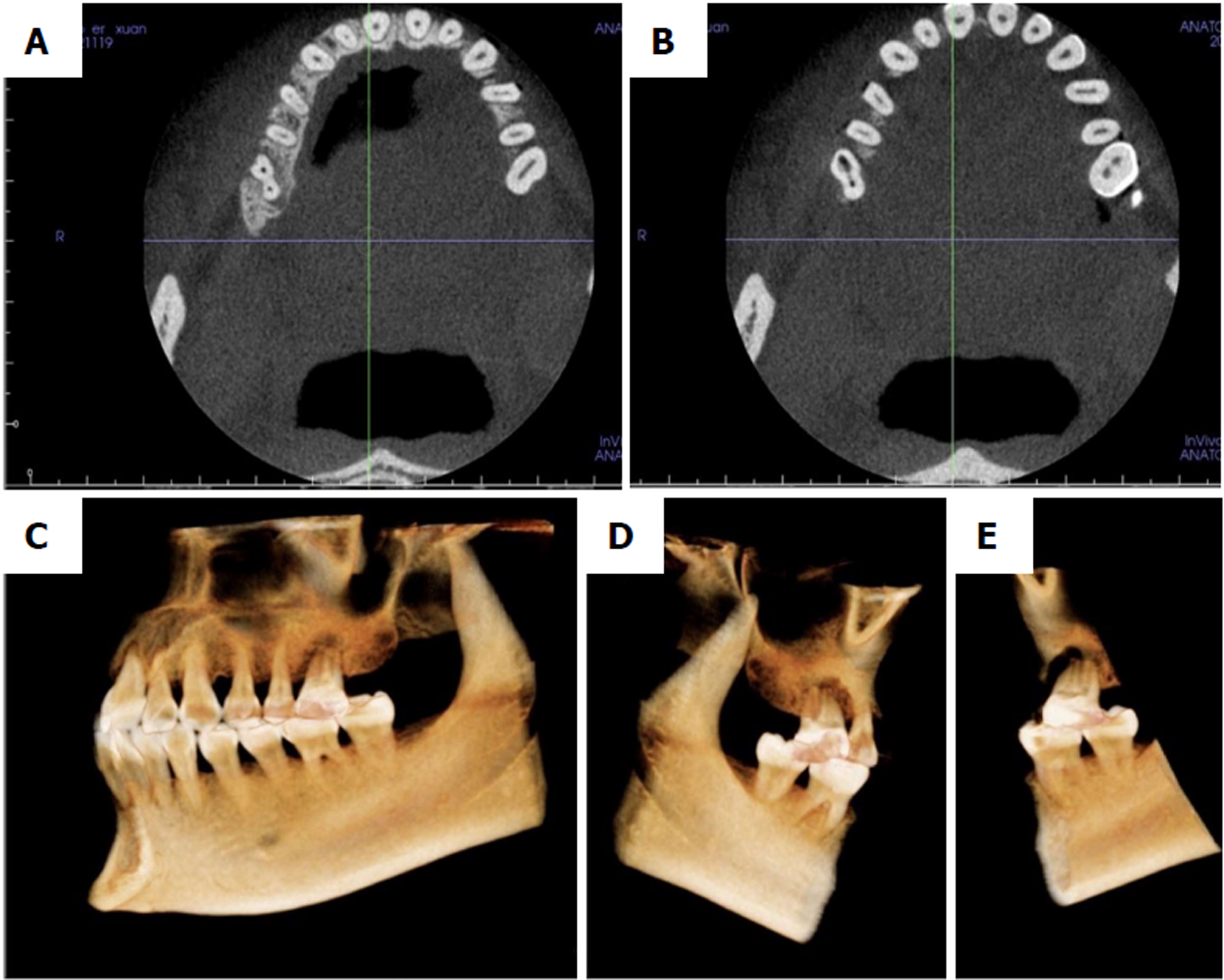Copyright
©The Author(s) 2019.
World J Clin Cases. Jan 6, 2019; 7(1): 79-88
Published online Jan 6, 2019. doi: 10.12998/wjcc.v7.i1.79
Published online Jan 6, 2019. doi: 10.12998/wjcc.v7.i1.79
Figure 1 Treatment process using a dental operating microscope and X-ray images (Case 1).
A: Preoperative periapical radiograph of teeth indicates the existence of decay in the distal part of the tooth; B-C: Only one buccal canal orifice and palatal canal orifice can be detected under the visual field of the dental operating microscope; D: Radiograph of master cone; E: Post-obturation periapical radiograph; F: Two root canals are obturated by gutta-percha.
Figure 2 Analysis of anatomical structure using cone beam computed tomography (Case 1).
A-B: Images of cone beam computed tomography (CBCT) show decay in the distal part of the maxillary molar on the left side; C-E: CBCT images show clear anatomical conditions of the left and right maxillary first molars with only two roots and two root canals; F-H: 3D-reconstructions of the maxillary first molar shows root canals in the buccal-palatal direction that are in different roots.
Figure 3 Treatment process using a dental operating microscope and X-ray images (Case 2).
A: Radiograph shows incomplete obturation of two root canals and the existence of a periapical lesion; B-C: Only two separate root canals are detected under the visual field of the dental operating microscope; D: Radiograph of master cone; E: Post-obturation periapical radiograph.
Figure 4 Analysis of anatomical structure using cone beam computed tomography (Case 2).
A-B: Cone beam computed tomography images show only two root canals in two separate roots of both the left and right maxillary first molars; C-E: 3D-reconstructions of the maxillary first molar shows root canals located in the buccal-palatal direction that are in different roots, similar to Case 1.
- Citation: Liu J, Que KH, Xiao ZH, Wen W. Endodontic management of the maxillary first molars with two root canals: A case report and review of the literature. World J Clin Cases 2019; 7(1): 79-88
- URL: https://www.wjgnet.com/2307-8960/full/v7/i1/79.htm
- DOI: https://dx.doi.org/10.12998/wjcc.v7.i1.79












